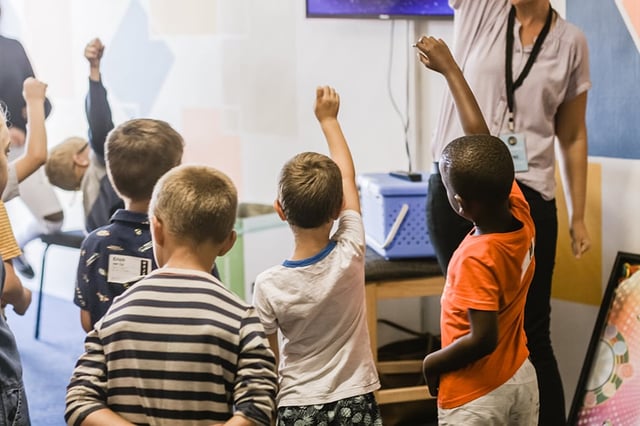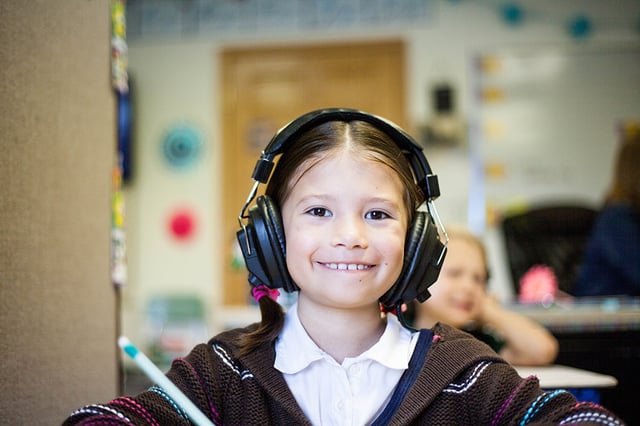How Educators Can Make Technology a Tool for Digital Equity
-1.jpg) Insights By Daniel J. Evans, Ed.D.
Insights By Daniel J. Evans, Ed.D.
Equal access to public school education has been available to every child for generations, though equitable access to knowledge and power still eludes us. Equal opportunity remains an unspoken dream deferred, an ambition unrealized, even within our public schools. Technology can narrow that divide.
Rightly so, the work within our public schools has been focused for years on increasing access to technology, and that is a laudable first step. Still, if we do not distill our actions through a filter of equity, powerful instructional tools like laptops and tablets may have no more impact on equitable outcomes than having equal access to #2 pencils.
To be clear, any honest pursuit of equality will require us to confront a number of personal and societal afflictions that threaten us still, including racial and class bias. In the end, the measure of our commitment and resolve as educators will be rendered only by the commitment and resolve that our children graduate with.
We cannot call ourselves successful until each and every child has full command of critical content, along with burgeoning self-confidence, dignity, and pride. As long as these outcomes are predictable by race and income status, our work remains incomplete and insincere.
Technology affords wide and deep possibilities for educators in providing equitable access to knowledge and information. “No society that calls itself democratic can settle for an education that does not encourage universal acquaintance with the best that has been thought and said” (Cremin, Lawrence A. The Genius of American Education. New York: Vintage, 1965). “Universal acquaintance” can be further defined as equal access to top-notch educators and materials as part of a broader exposure to all things excellent.
It should not be the case that children from poorer families have less exposure to great artists, writers, engineers, and entrepreneurs. They should know no less about grand cathedrals, natural wonders, fanciful undertakings, and sublime discoveries. They must have no less trust in things like hope and decency.
In a faithful democracy, excellence is not a promise made only to the privileged. It is commanded to each of us as an inalienable human right, a declaration that affirms our place as equal within our common humanity and shared pursuits. As educators who are committed to funding these beliefs, let us consider two ways in which technology must be central to our cause.
A Tool for Student Exploration
Learning is not something that we can impose on learners. If we get it right, it should open (and not close) the aperture to student lives in exhilarating and relevant ways. In this way, technology is not only a tool for distributing content but a portal for personal inquiry, self-examination, and self-discovery.
We are never going to inspire and engage children if they view their subjects and lessons as disconnected or even random. In fact, we have tried that approach and it doesn’t work.
Our evolution as an industry will demand that we identify the key skills and concepts that students must master and then ensure that we have viable, relatable curricula that overlap subject areas, even if that means covering less material than we do now.
A key readiness measure for students in the next century will be their ability to communicate effectively, solve complex problems, think creatively, pitch their ideas, and accept critical feedback. We must find ways to integrate technology in developing these new-century skills for our children.
These life skills may include lessons and activities in their local neighborhoods in which students better understand their communities, build authentic relationships, uncover new business ventures, and develop their personal brands.
This will require learning to be greatly inductive, project-based, place-based, and personalized. By this definition, rigorous classroom instruction will become synonymous with personal reflection, independent research, and authentic peer-to-peer interaction.
Using technology as a tool to communicate (social media as an obvious example), students can be substantively involved in community activism in positive and productive ways. This will require community partnerships and deep trust in our young adults to explore issues of self-respect, empathy, patriotism, and citizenship.
In a strange twist of irony, technology has increased access to information but has not yet substantively increased differentiation and personalization. As an industry, we must uncover why this is via dialogue that is constructive and child-centered, and (of course) context and product agnostic. In the end, how can we claim victory for increasing access to hardware and software if our tools do not serve to increase dialogue, understanding, and compassion?
A Tool for Student Validation
Technology can help us transfer power and agency in schools from the educator to the learner. As we advance as an industry, schools must shift to meet the demands of the learner (not the system). It can be argued that kids don’t come to school to learn as much as they come to school to think, to question, and to discern how they might cope with what they already know.
Technology can shift the conversation from content to context.
- Is climate change affecting my community and family?
- What about water quality, transportation, energy independence, financial security, power, politics, and corruption?
- What do I believe?
- Where do I remain skeptical?
- How do I stay open-minded?
- How might I contribute to the conversation?
The truest definition of personalized learning is not access to products and software but to information in context that connects content to students’ lives, passions, and ambitions. This may someday include deep research activities or longitudinal projects (technology-assisted, of course) and fieldwork within local businesses, hospitals, museums, and parks.
If we do this well, students will learn as much about themselves as they do the content.
As educators, we cannot mandate understanding or appreciation. These are things that cannot be prescribed or scripted. They must be discovered, sometimes intentionally and sometimes not. This must happen locally, within the tapestry of our lived experiences. For what good is it to get students to know something if they don’t care to know it?
Think of school not as the center-point for standardization but as the hub of collaboration and validation within our communities. We matter. My family matters. We are relevant. I am relevant.
The balance between content and context will be critical, for there is something amiss if our children are graduating more knowledgeable about the world around them and less knowledgeable of themselves.
In the end, equality of outcomes is born from equal access to our unique spirit and potential. At present, we are not there. The disparity in outcomes among subgroups is proof enough, and those struggles are seeded deep within our curricula, standards, and processes. Alas, racial struggles are not the only burdens we bear. Class bias and confirmation bias tarnish our work as well (in many cases we see this in implicit forms).
Either no one is to blame, or we all are. Either way, we must claim it. Like all great social endeavors, our schools continue to evolve along with the rest of us and that is a good thing. Yes, we have made progress, and (yes) we can get there from here.
As educators, our charge is to take advantage of the unique times we live in and lead the change we wish to see in our schools, accepting our responsibility at the front lines of our future practice. If we do, we can cultivate deep-rooted experiences for our children that are much more durable than we have now and much richer than we have ever known.




